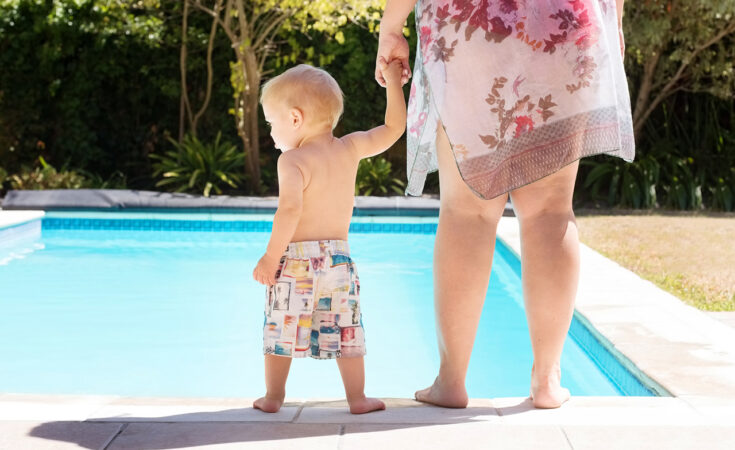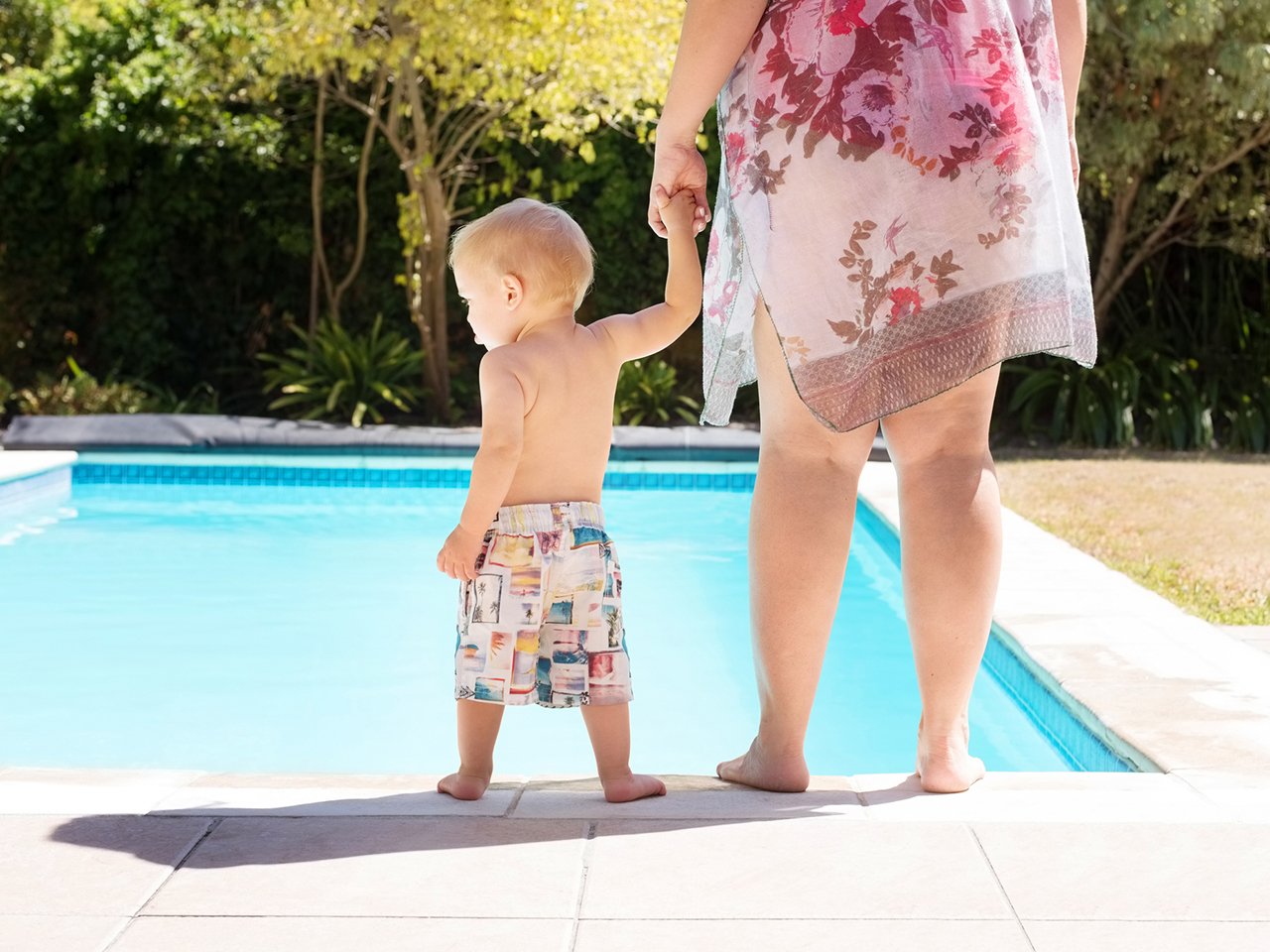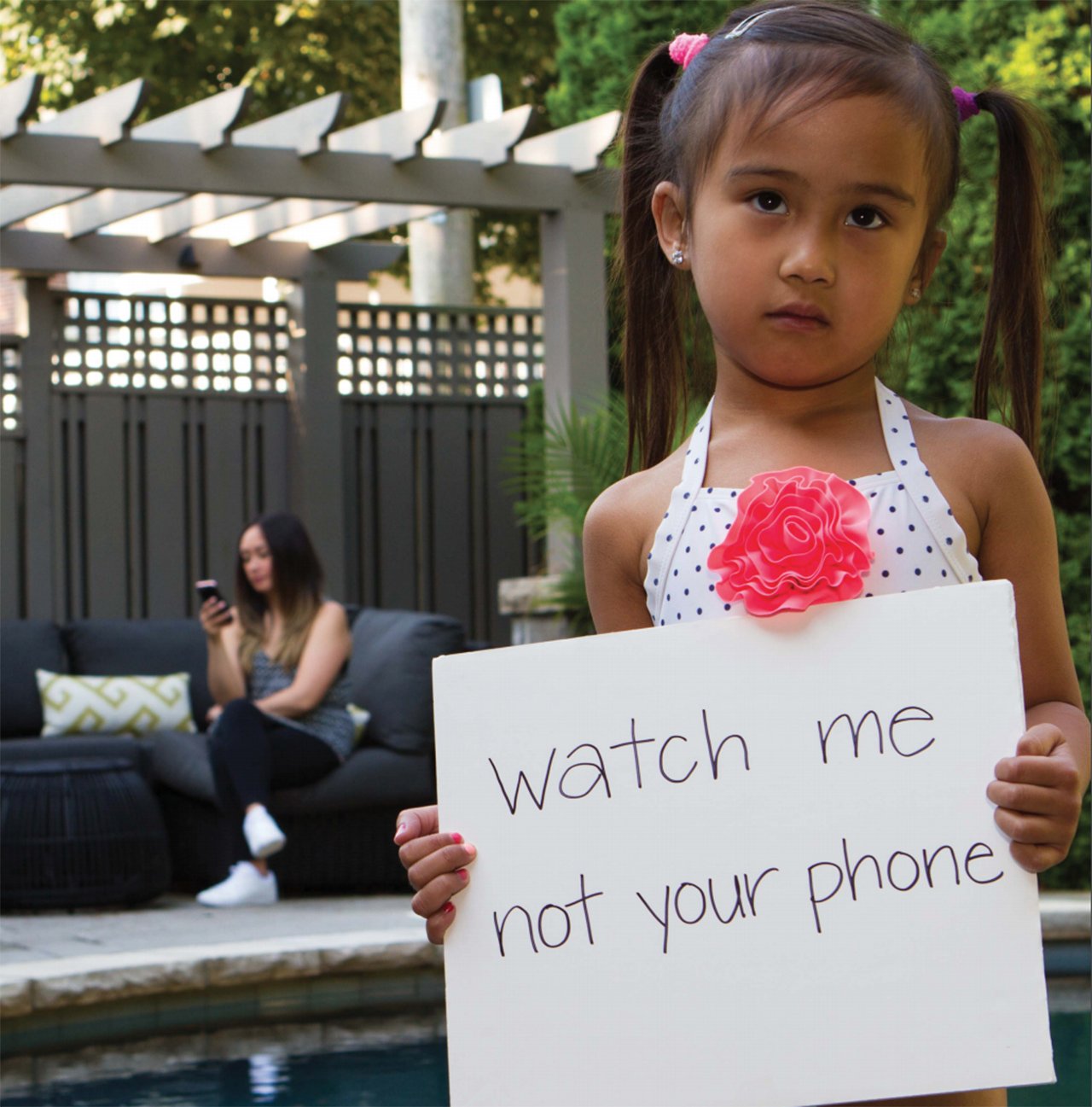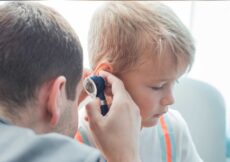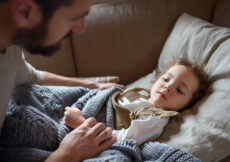A child under 30 pounds can drown in the time it takes you to text, “Pool party starts at noon, don’t forget to bring towels and sunscreen.” And on a gorgeous, sunny Father’s Day spent at my local pool, I almost learned this the hard way when I saved the life of a 22-month-old.
Soon after cozying up on an outdoor sofa, I noticed three little boys zooming around our gigantic inground community pool on tricycles. Even with their life jackets, I had a bad feeling that one of them was going to accidentally ride into the pool, so I began watching them closely because though there were tons of adults around, not one had their eyes fixed on the boys.
Then, my fear became reality as I witnessed the youngest take a corner too wide and skid out, flipping into the hot tub. The boy was fully submerged under the water, trapped between the hot tub seat and his large plastic tricycle, which was too heavy for him to push off.
All you could see was one tiny foot flailing in the air, a couple of inches above the water, as he fought to save his own life.
I took off running across the courtyard as fast as I could, fully expecting someone to have pulled him out by the time I got there. But no one even noticed, and if you’d missed him flip into the water, it would have just looked like a floating toy.
It took me about 15 seconds to get to the hot tub and jump in fully clothed, scooping him up from under the tricycle with one arm as I threw it off him with the other. I quickly checked to make sure he was breathing, and since he was coughing, I tipped him downwards over my knees and strongly patted his back as he coughed, spitting up water.
The little boy then grabbed me around the neck and clung to me tightly, despite us being total strangers. The look of terror on his face will haunt me forever.
After the toddler was safe in the arms of his grandfather, the boy’s six-year-old brother, who was sitting on the edge of the hot tub, called out to me and said, “Thanks for saving my brother. I was trying to help him, but I couldn’t.” I’d been so focussed on saving the boy, I hadn’t even noticed his efforts.
As I reflected on my traumatic afternoon at the pool, I realized just how many misconceptions parents can have about water safety—and with drowning’s place as the leading cause of preventable deaths for children ages one to four, according to Drowning Prevention Research Centre Canada, this has to change fast.
Having a safety plan in place before going to the pool (or any body of water) is key, not only because precautions can save lives but also since there’s no time to waste in a moment of crisis. Here are some of the biggest and most surprising things I learned following that fateful day, plus the simple guidelines that will help you protect your family.
1. The ‘village mentality’ can mean no one is watching
The little boy’s mother and more than a dozen adults were just a few feet away when he fell in the tub, but no one noticed—and this is surprisingly common. Drowning deaths can happen quickly, and often quietly, especially when the child’s body is submerged. “When a child is drowning and there’s water in their airways, they can’t speak or call for help,” says Barbara Byers, public education director for Canada’s Lifesaving Society. She stresses the importance of being fully attentive when watching children in and around the water. “If you are doing anything else, you’re not 100 percent focused, and you’re unable to effectively notice if something happens.”
And while lifeguarding is always the parents’ responsibility, she encourages designating on-duty “water watchers” (almost like a designated driver—see #9, below), as drownings often occur when one adult falsely believes that another is watching—a phenomenon that Byers and other lifeguards know all too well. “I lifeguarded for 10 years and these situations played out frequently,” says Brittany Anas of Denver, CO. “I was always surprised how oblivious the parents were. One toddler pushed a stroller into the deep end, and we had to rescue a six-month-old who was strapped in and sinking in eight feet of water. I still get nightmares.”
2. The briefest distraction can lead to tragedy
According to Byers, a child can drown in as little as 10 seconds because the water in their airway inhibits their ability to breathe. This is the time it takes to dig through your bag for sunscreen, send a text, put condiments on your burger or check Instagram. “You can’t be on your phone (or reading a book) and effectively watch kids in the water at the same time,” says Byers. That goes for conversations too since we tend to look at people when they’re talking to us.
Photo: Lifesaving Society
Nicole, a mom in San Diego, was actually in the pool with her six-year-old son when tragedy almost struck. “He was holding on to the side of the pool and slipped under the water while I was standing right next to him,” she says. “I’d turned to speak to my husband about dinner plans and neither of us heard anything. Thankfully I turned around and pulled him up in time, but I’ll never forget the look of panic on his face under the water. I learned that day just how fast and quiet drowning can be.”
3. Children can’t be expected to save their siblings’ lives
After the older sibling told me he tried but couldn’t save his brother, I wondered why he hadn’t called out to his mother—who was no more than five feet away at a table on the opposite side of the large hot tub. There’s a good chance he was in shock. He also might have been afraid of getting in trouble, especially if he’d been told to keep an eye on his younger brother. “It’s not a kid’s job to watch younger siblings,” says Byers, who is also a mother of three. “They’re not equipped.”
4. Like any skill, pool safety needs to be taught
Byers encourages parents to enrol their kids in swimming lessons at age three, so both child and parent learn about pool safety and precautions from the instructors. She says it’s imperative to educate young children on the dangers of pools, and what to do if another kid is in trouble.
It’s also crucial that they know what drowning might look like and to call the closest adult for help if they see it. Since kids can have a hard time formulating words, especially when scared or upset, it’s important to have a designated word that they can repeat (like “help,” “hurt” or “danger”) and to train them to point in the direction of the child in trouble to channel their panic quickly and effectively.
5. Life jackets and floaties can offer a false sense of security
Floaties or water wings are not lifesaving devices—they are essentially toys, and will not protect your child from drowning. Byers, who served as research director for the Canadian Drowning Report, urges parents not to use them at all because there’s too great a chance they could fall off, your child could take them off, or they could pop. Inner tubes are even more dangerous as they could flip over, leaving your child’s head submerged under the water. Life jackets, also called Personal Flotation Devices (PFD), are your best form of protection, as their front flotation pads turn a child over so their face isn’t in the water. In fact, in more than a decade, no Canadian child under the age of 12 has died from a boating fatality as personal flotation devices have saved them in every case. Still, nothing protects children more than giving 100 percent of your attention to watching them around water.
6. No matter how small or shallow, pools of water are never completely safe
It comes as a shock to many parents that kids can drown in as little as two inches of water. “A toddler’s head is disproportionately larger than their body, making it heavy,” explains Byers. “If their head goes into the water, it will be hard for them to lift it up, and if a child’s nose and mouth are in the water, it can get into their airway and they can drown.” She guides parents to closely watch children around all bodies of water, including bathtubs, wading pools and even buckets. And when you’re using water—say, to wash your car—make sure to dump it when you’re done.
7. A fenced-in pool doesn’t guarantee safety
Although nothing is absolutely foolproof, installing four-sided fencing around the pool provides the most protection when combined with self-closing and self-latching gates. “Three-sided fencing around a pool, with the home acting as the fourth wall, protects your pool from strangers getting in, but it doesn’t protect your child,” says Byers. “You might close the door behind you, but it pops open and your child gets into the pool. Or your toddler scampers out behind you unnoticed and finds their way into the pool.” If you have a three-sided fence, she stresses the importance of having controls on your home’s door to prevent a child from entering the pool area unless they are with you or a designated water watcher (something they should be taught from an early age).
8. Don’t expect to hear “help” and see flailing limbs
You may be used to the waving arms and cries for help you see when a character is drowning in the movies, but Byers notes that it’s generally far more silent and subtle. “A drowning child is sinking while struggling to stay afloat, so it typically looks like their hands are grabbing the air as if they were trying to climb a ladder.” She adds that lifeguards are trained to look for certain changes in behaviour as signs of trouble. “When drowning, a swimmer who was horizontal goes vertical and starts bobbing up and down.” Additionally, “their eyes will be wide open, glassy, with a look of fear.” Since they can’t speak, they are looking to you for help, urging you with their eyes.
9. You should be designating Water Watchers
Byers believes strongly in the importance of designating a dedicated water watcher at all times. This is an adult who can swim, is trained in CPR, and remains by the pool at all times with the sole job of watching the children: no phones, games, cocktails, conversations or other distractions. Adults can share the responsibility by working in 15 or 20-minute increments, designating a chair at the best vantage point for the adult in the Water Watcher role and even carrying a whistle like a lifeguard to alert others in case of an emergency. Free kits containing tips and information on Water Watchers are available from the Canadian Red Cross.
10. Keep wheels away from the water
Bikes, tricycles, scooters, skateboards and roller skates should never be used near water, since they can easily swerve or skid out, causing a child to accidentally fall into the pool and drown. What’s worse, the weight of these items can trap children under the water once they fall in.
11. Know when to NOT mind your own business
The statistics on preventable water-related deaths are staggering. On average, 35 children die by drowning annually in Canada, most in private pools. “Under the age of five, 96 percent of the time the parents were either distracted or not there,” says Byers. This is where it takes a village, and offering help when you see kids in danger is always your best bet. Had I waited for a second longer, anticipating the boy’s parents or someone closer would have rescued him, or done nothing fearing I’d look overly dramatic for running to his aid, the toddler I saved very likely would have died by drowning.
If you do see something, act fast. “Time is so important when it comes to drowning,” says Byers. “Every second counts, because if water is in the airway and they can’t breathe, it affects the brain.” To best equip ourselves to help if a child (or any human) is drowning or in danger, Byers encourages everyone—and especially parents of young children—to get basic first aid training and to become certified in CPR.
Stay in touch
Subscribe to Today’s Parent’s daily newsletter for our best parenting news, tips, essays and recipes.
= 0;if(!is_postback){return;}var form_content = jQuery(this).contents().find(‘#gform_wrapper_13’);var is_confirmation = jQuery(this).contents().find(‘#gform_confirmation_wrapper_13’).length > 0;var is_redirect = contents.indexOf(‘gformRedirect(){‘) >= 0;var is_form = form_content.length > 0 && ! is_redirect && ! is_confirmation;var mt = parseInt(jQuery(‘html’).css(‘margin-top’), 10) + parseInt(jQuery(‘body’).css(‘margin-top’), 10) + 100;if(is_form){jQuery(‘#gform_wrapper_13’).html(form_content.html());if(form_content.hasClass(‘gform_validation_error’)){jQuery(‘#gform_wrapper_13’).addClass(‘gform_validation_error’);} else {jQuery(‘#gform_wrapper_13’).removeClass(‘gform_validation_error’);}setTimeout( function() { /* delay the scroll by 50 milliseconds to fix a bug in chrome */ jQuery(document).scrollTop(jQuery(‘#gform_wrapper_13’).offset().top – mt); }, 50 );if(window[‘gformInitDatepicker’]) {gformInitDatepicker();}if(window[‘gformInitPriceFields’]) {gformInitPriceFields();}var current_page = jQuery(‘#gform_source_page_number_13’).val();gformInitSpinner( 13, ‘https://www.todaysparent.com/wp-content/plugins/gravityforms/images/spinner.gif’ );jQuery(document).trigger(‘gform_page_loaded’, [13, current_page]);window[‘gf_submitting_13’] = false;}else if(!is_redirect){var confirmation_content = jQuery(this).contents().find(‘.GF_AJAX_POSTBACK’).html();if(!confirmation_content){confirmation_content = contents;}setTimeout(function(){jQuery(‘#gform_wrapper_13’).replaceWith(confirmation_content);jQuery(document).scrollTop(jQuery(‘#gf_13’).offset().top – mt);jQuery(document).trigger(‘gform_confirmation_loaded’, [13]);window[‘gf_submitting_13’] = false;}, 50);}else{jQuery(‘#gform_13’).append(contents);if(window[‘gformRedirect’]) {gformRedirect();}}jQuery(document).trigger(‘gform_post_render’, [13, current_page]);} );} );]]>

